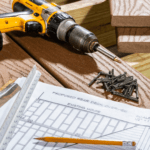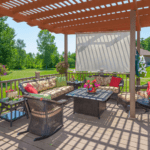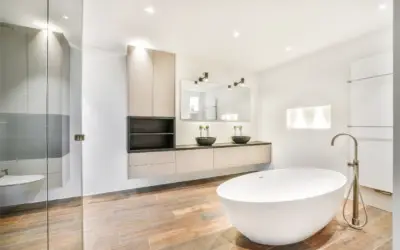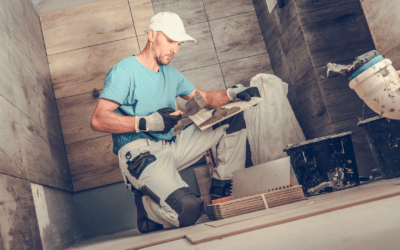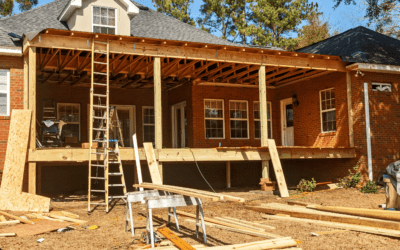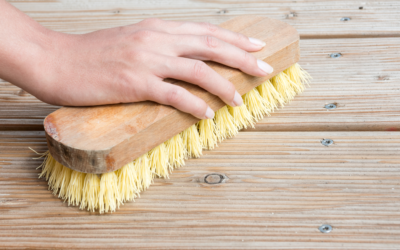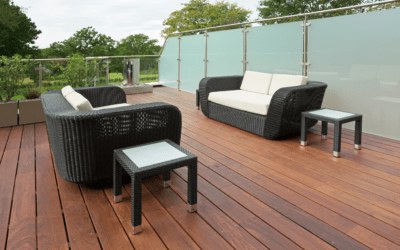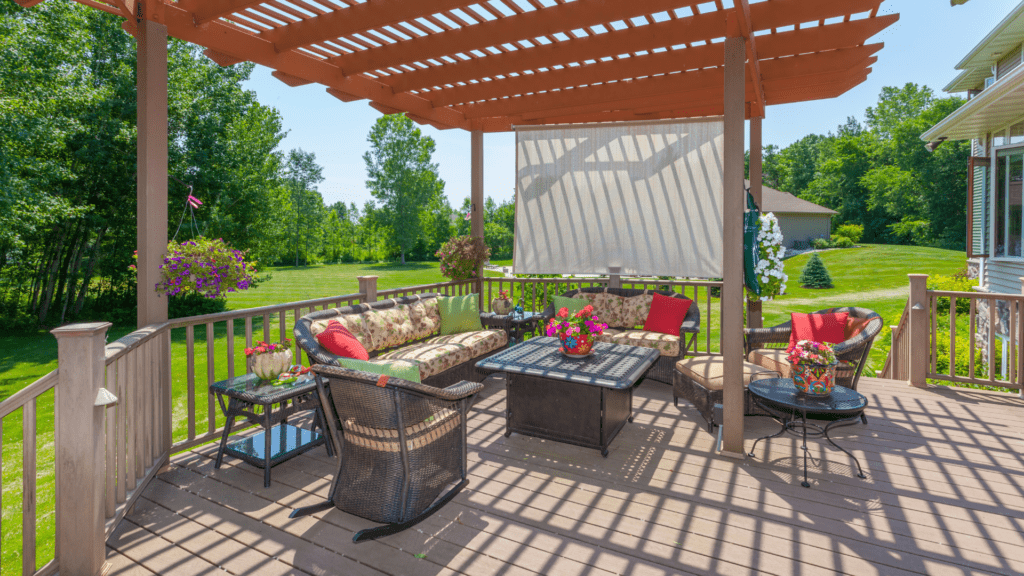
Introduction
The choice of materials for your Canadian deck is vital for its longevity, durability, and overall aesthetic appeal. Finding suitable materials can be daunting and time-consuming, but with expert advice and recommendations, you can make an informed decision that suits your needs. From the harsh winters to the blazing summers, your chosen materials must withstand the diverse Canadian climate. Whether you’re a homeowner or a business owner in Barrie and Simcoe County, this guide will provide valuable insights to help you select the most suitable materials for your deck.
Climate Considerations
When it comes to building a deck in Canada, the choice of materials is crucial due to the extreme weather conditions, including heavy snowfall and freezing temperatures. Materials with high weather resistance, such as composite decking or pressure-treated wood, are essential for enduring the harsh Canadian climate. Proper ventilation and drainage systems play a crucial role in preventing moisture buildup, which can lead to mold, rot, and deterioration of the deck materials. Consider using materials with good UV resistance to protect your deck from intense sunlight and prevent color fading over time.
Weather Resistance
When selecting materials for your Canadian deck, it’s essential to prioritize weather resistance. Look for materials designed to withstand heavy rainfall, snow accumulation, and fluctuating temperatures without warping or deteriorating. In addition, regular maintenance and sealing can enhance the weather resistance of natural wood decking, making it a durable option for Canadian climates. Investing in stainless steel fasteners and corrosion-resistant hardware is also vital for ensuring the structural integrity of your deck in wet and humid conditions. Choose materials with low water absorption rates to minimize the risk of swelling, cracking, or splintering due to exposure to moisture.
Temperature Adaptability
Selecting materials that can withstand extreme temperature variations is vital for Canadian decks, where summers can be hot while winters are bitterly cold. Composite decking offers excellent temperature adaptability by remaining stable in freezing and sweltering conditions without warping or expanding. Certain types of tropical hardwoods are naturally resistant to temperature changes, making them suitable choices for Canadian outdoor structures. Consider using heat-reflective materials that stay cooler in direct sunlight to ensure comfortable use of your deck during hot summer days.
Durability and Maintenance
Selecting suitable materials for your Canadian deck is vital to guarantee long-term durability. Canadian decks require highly durable materials to withstand the elements in harsh weather conditions. Additionally, incorporating regular maintenance practices like cleaning and sealing can considerably prolong the lifespan of your deck materials. When assessing the maintenance requirements of different decking materials, it’s essential to consider factors such as resistance to rot, mold, and insect damage.
Longevity
The longevity of your Canadian deck is heavily influenced by its ability to endure extreme temperature changes, which are common in Canadian climates. Certain wood species, such as cedar and redwood, naturally resist decay, enhancing your deck’s longevity. In addition, composite decking materials are renowned for their exceptional longevity due to their resistance to moisture and UV rays. Regularly inspecting and repairing your Canadian deck is vital to keep it in top condition for years.
Maintenance Requirements
Understanding the specific maintenance requirements of each material type is crucial for making an informed decision about your deck. Wood decks may require annual staining or sealing to maintain their appearance and structural integrity. On the other hand, composite decking typically demands less maintenance than wood, making it an attractive option for homeowners seeking low-maintenance solutions. Regularly clearing debris, snow, and ice from your deck can prevent moisture-related issues and minimize long-term maintenance requirements.
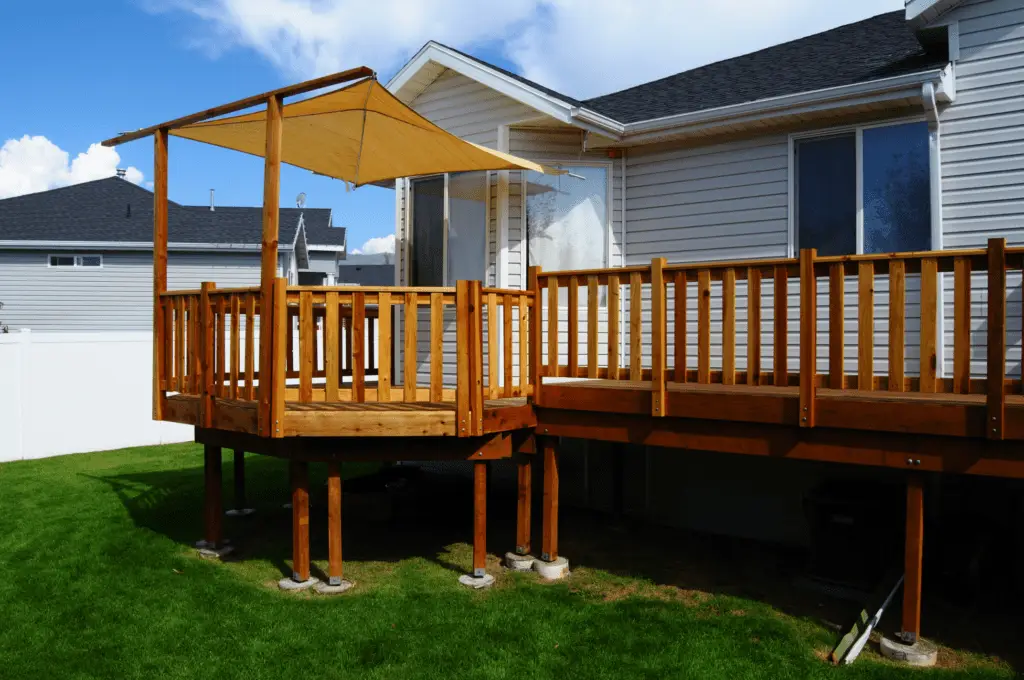
Aesthetics and Style
When it comes to decking materials, the choice between wood finishes or composite materials can significantly impact the aesthetic appeal of your outdoor space. Wood finishes can add a warm and natural look to your deck, creating a classic and timeless ambiance that complements the exterior of your home or business. On the other hand, choosing a composite material allows for a sleek and modern aesthetic, offering versatility in design with unique patterns and styles. It is essential to consider the color and texture of wood finishes to ensure they complement the exterior design. It worth noticing that composite decking options usually offer more design possibilities.
Wood Finishes
Stained wood finishes offer a timeless and sophisticated aesthetic for your deck, enhancing the natural beauty of the wood while providing a classic appearance. By applying a clear sealant, you can further preserve the wood’s elegance and protect it from the harsh elements, ensuring its longevity. For Canadian climate conditions, pressure-treated wood finishes stand out due to their durability and resistance to decay, making them an ideal choice for outdoor structures. Exotic hardwood finishes like mahogany and cedar can create a luxurious and sophisticated atmosphere for your outdoor space that complements your home or business.
Composite Options
Composite decking materials offer an array of colors, providing the look of natural wood without demanding maintenance. Choosing capped composite options ensures superior protection against fading, staining, and scratching, enhancing the overall durability of your Canadian deck. These materials are eco-friendly, often made from recycled plastics and wood fibers, making them a sustainable choice for environmentally-conscious homeowners. Textured composite options also offer added slip resistance, making them ideal for areas prone to moisture or heavy foot traffic, ensuring safety and longevity for your deck.
Environmental Impact
Using recycled composite materials for your Canadian deck offers a low-maintenance solution and contributes to environmental conservation. By utilizing composite materials, you are reducing the demand for natural wood, thus helping to preserve forests and natural habitats. Recycling plastic and wood fibers into composite materials diverts waste from landfills, ultimately benefiting the environment. Compared to traditional wood, composite decking materials have a longer lifespan, reducing the frequency of replacements and minimizing the overall environmental impact.
Eco-Friendly Materials
Bamboo decking offers a sustainable option for homeowners due to its rapid growth and renewability, making it eco-friendly. Cedar decking, on the other hand, is naturally resistant to decay and insects, eliminating the need for harmful chemical treatments. Recycled plastic lumber provides a durable alternative to traditional wood while reducing the consumption of virgin plastic materials, contributing to environmental conservation. Aluminum decking is a sustainable and recyclable material with a long lifespan, making it an environmentally friendly option for deck construction.
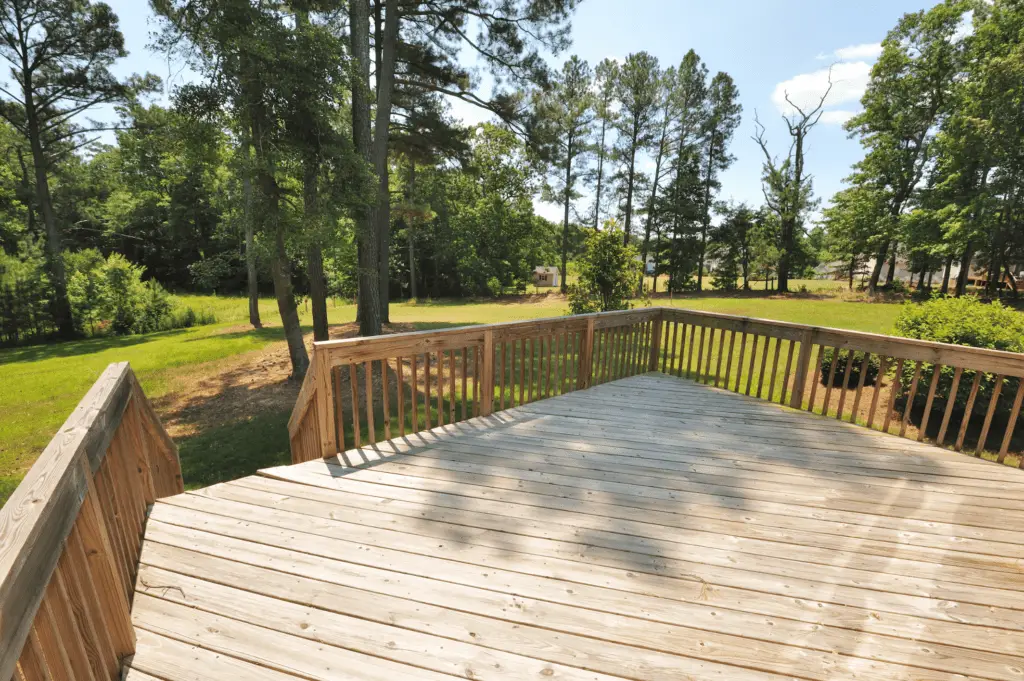
Sustainable Choices
When selecting materials for your Canadian deck, several eco-friendly options exist. Pressure-treated lumber from responsibly managed forests ensures sustainable practices, supporting the environment while providing durability. Choosing locally sourced materials reduces transportation emissions and supports the regional economy. Opting for reclaimed or salvaged wood promotes resource conservation by giving new life to existing materials and minimizing the use of virgin resources. Utilizing FSC-certified wood showcases a commitment to responsible forestry management and sustainable sourcing practices, contributing to environmental stewardship. These choices benefit your deck and the world around you.
Frequently Asked Questions
Are specific materials better suited for the climate in Barrie and Simcoe County?
Choosing the suitable materials for your deck in Barrie and Simcoe County is critical; we know exactly what it takes to do the job. With our expertise, we can confidently advise you to consider the Canadian climate and select materials that can withstand harsh conditions. Trust us to help you make the best choice to ensure your deck remains solid and durable for many years.
Pressure-treated wood is a top choice in this region, providing resistance to rot, decay, and insects, ensuring durability in challenging weather conditions.
Composite decking is an excellent option, withstanding temperature fluctuations while requiring minimal maintenance.
Cedar is also well-suited for the local climate and is known for its natural resistance to moisture, decay, and insect damage, making it a reliable choice for your Canadian deck.
What maintenance requirements should I consider when choosing decking materials for my Canadian home or business?
Choosing materials that can withstand these conditions is essential when building a deck in areas prone to extreme cold and moisture. Pressure-treated wood or composite decking are good options. To minimize the need for frequent maintenance and repairs, prioritize materials resistant to mold, mildew, and insect damage. Regularly cleaning and sealing your deck will safeguard it from Canada’s harsh weather conditions and extend its lifespan. Proper ventilation and drainage are also essential to prevent water accumulation, which can lead to material deterioration.
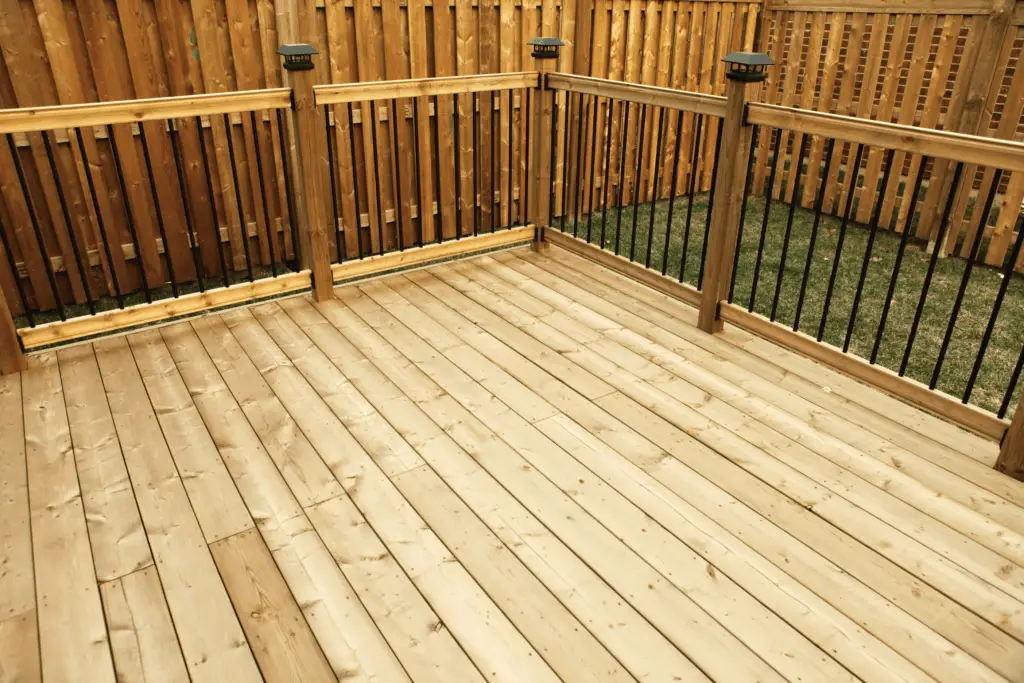
Can you provide recommendations for eco-friendly decking materials suitable for the Canadian environment?
Cedar and redwood are the top choices for eco-friendly decking options suitable for the Canadian environment due to their natural resistance to insects and decay. Composite decking, made from recycled wood fibers and plastic, is also a good option as it is durable, requires low maintenance, and is available in various colors to match your preferences. Ipe wood is another fantastic eco-friendly material highly dense and resistant to rot, decay, and pests, making it perfect for outdoor use in the Canadian climate. Bamboo decking is becoming more popular because of its environmental friendliness, as it is a sustainable choice given bamboo’s rapid growth and renewability.
Conclusion
The resistance to weather and adaptability to temperature are critical factors that affect the durability and maintenance of your deck. Having an appealing look is crucial in enhancing the overall appearance of your outdoor space. Wood finishes offer a classic and classy look, while composite options provide various design possibilities with lower maintenance requirements. It is also essential to consider the environmental impact of your chosen materials.
Opting for eco-friendly and sustainable choices contributes to environmental conservation and responsible forestry management practices. Ultimately, by considering climate considerations, durability and maintenance, aesthetics and style, and the ecological impact of the materials, you can make an informed decision that not only enhances your outdoor living space but also supports sustainable and eco-friendly practices.


